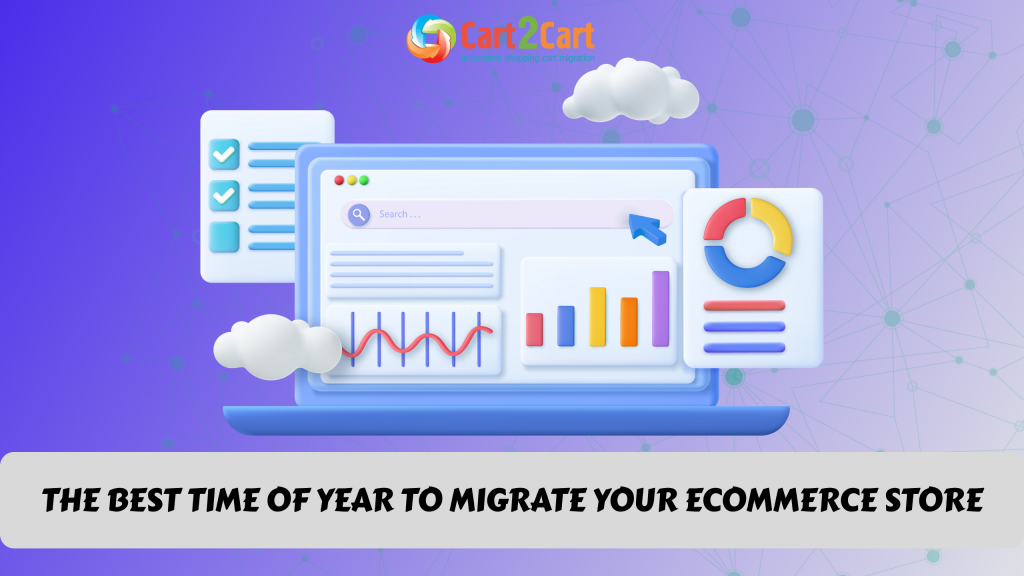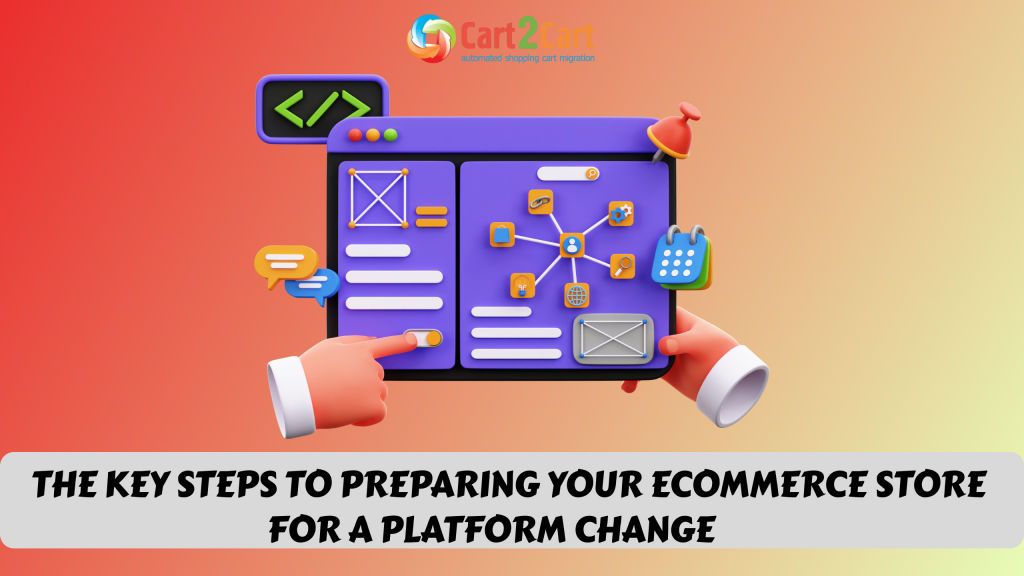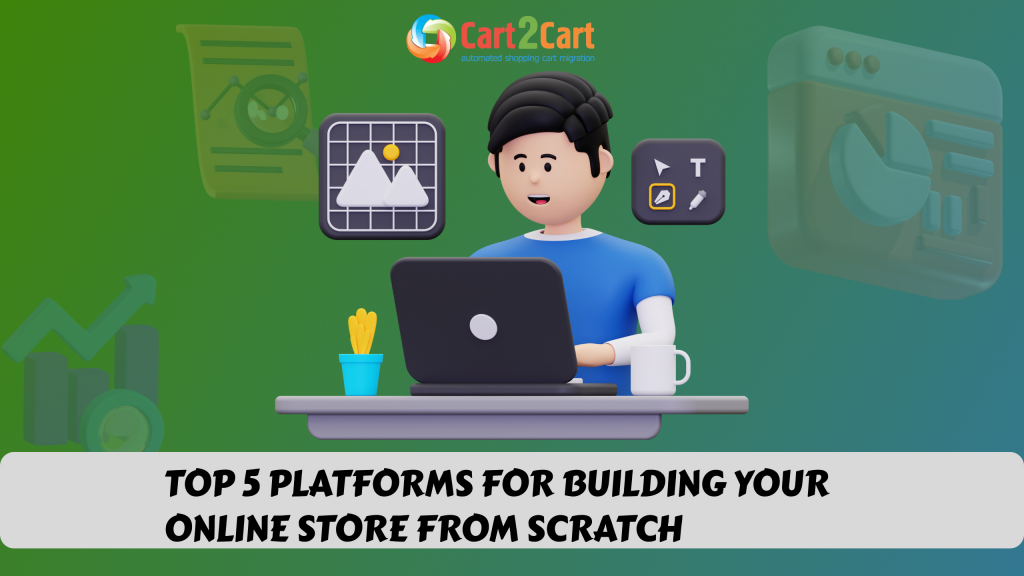
Migrating your eCommerce store to a new platform can feel like a daunting task. From ensuring a smooth transition to making sure you don't lose valuable data, there's a lot at stake. One crucial, yet often overlooked aspect of the migration process is timing. When is the best time to migrate your eCommerce store?
The right timing can help you avoid unnecessary stress, reduce downtime, and even improve your store’s performance after the migration. In this guide, we will break down the best times of year to migrate your eCommerce store and the factors you should consider to ensure a successful move.
Understanding the Impact of Migration
Before diving into the best time for migration, it’s essential to understand how migrating your eCommerce store works. Migration typically involves transferring your product data, customer information, order history, and content from one platform to another. While the migration itself might only take a few hours or days, preparing for it and dealing with any post-migration issues can take longer.
However, the timing of your migration can influence how smoothly everything goes. Migrating during peak shopping seasons, for example, could result in a disrupted customer experience, lost sales, and technical issues. On the other hand, migrating at the right time can reduce the chances of these problems and even lead to a more efficient store with better features, functionality, and performance.
Why Timing Matters
The right timing for migrating your eCommerce store can make a huge difference for several reasons:
- Reduced Traffic: If your site is busy with customers during a peak sales period, migrating could cause significant disruptions. Traffic spikes can overwhelm the new platform, which may lead to slower load times, site crashes, or a poor customer experience.
- Inventory Management: Migrating your store during busy sales seasons might interfere with your inventory management and order fulfillment processes, especially if your current platform has integrated tools for stock tracking.
- Customer Experience: Your customers expect a seamless shopping experience. Any downtime, issues with logging in, or disruptions in order processing could lead to frustration and loss of business. Avoiding migration during periods of high customer demand is essential.
- Technical Support: Migration often requires significant technical support to ensure that everything transfers correctly. During peak seasons, you may find it harder to get the support you need from the migration team or platform provider.
Ready to Migrate Your Store at the Perfect Time?
Make your eCommerce migration smooth and stress-free with Cart2Cart! Transfer your products, customers, and orders automatically—no downtime, no data loss. Start your seamless migration today!
TRY IT FREE
The Best Times to Migrate Your ECommerce Store
The Off-Season (Post-Holiday Period)
The best time to migrate your store is generally during the off-season. The period after the holiday rush—usually from mid-January to early March—is ideal for several reasons:
- Lower Traffic and Sales Volume: With fewer customers shopping, the strain on your site is reduced, making it easier to perform the migration without disrupting the shopping experience.
- Availability of Support: As eCommerce businesses are generally quieter during this time, you’re more likely to receive the support you need to handle technical aspects of the migration.
- Time for Testing: Post-holiday periods give you time to test and fix any issues that might arise after migration without the added pressure of a high volume of orders and traffic.
- Preparing for the Next Big Season: Migrating after the holiday rush allows you to prepare your store for the next major shopping period (such as summer sales or back-to-school promotions) with a fresh, optimized platform.
Early Spring (March to April)
The early spring months can also be a great time for migration. By this point, most of the holiday season traffic has subsided, and businesses are preparing for the next round of promotions. Here’s why early spring is a good choice:
- Moderate Traffic: The traffic volume isn’t as high as the holiday season, but customers are still shopping for new season products.
- Fresh Start for Q2: Migrating in March or April gives you a head start on the second quarter of the year. You can ensure that your new platform is ready to handle the upcoming sales events.
- Increased Vendor Availability: Migration services often have more availability during the spring, meaning that you can get faster, more dedicated support from the platform provider or migration service.
Late Summer (July to August)
Late summer can also be an excellent time to migrate, especially if your business deals with seasonal products. By migrating in July or August, you can take advantage of several benefits:
- Preparation for Holiday Rush: Late summer gives you time to adjust and optimize your store before the major sales events in fall and winter. This is particularly helpful for businesses that rely heavily on seasonal sales.
- Stable Traffic: Although not as quiet as the post-holiday period, late summer usually brings a slight dip in traffic. This allows you to perform the migration with less risk of overwhelming your website.
- Sales and Promotions: Some businesses hold mid-year sales or promotions during the summer, and migrating before this period can help ensure a smooth experience for customers.
Avoid Major Holidays and Peak Seasons
While it may seem tempting to migrate during quieter times, some periods should be strictly avoided for a seamless migration process:
- Black Friday and Cyber Monday (November): One of the busiest shopping times of the year, migrating your store during Black Friday or Cyber Monday can cause major disruptions in your sales, customer experience, and technical performance.
- Christmas and New Year (December): Similarly, the holiday season in December is one of the highest traffic periods for most eCommerce businesses. Performing a migration during this time can lead to lost sales and customer frustration due to website downtime or slower loading speeds.
- Back-to-School (August to September): This is another peak season for many eCommerce stores, especially for businesses in fashion, education, and tech. Migrating your store during this time can affect your ability to handle the increased sales volume effectively.
Consider Your Business Cycle and Product Category
While general advice is important, it’s also essential to consider your business’s unique cycle and product category. For example:
- Seasonal Products: If you sell seasonal products (e.g., winter coats, holiday decorations), you might want to migrate right after the off-season ends to avoid disruptions during your peak sales periods.
- Non-Seasonal Products: If you sell products that have steady demand year-round, you may have more flexibility to choose a time to migrate that suits your schedule.
- Subscription Models: If you run a subscription-based service, it’s particularly important to consider migration timing to avoid disruptions in recurring billing or customer data management.
Tips for a Successful Migration
- Plan Ahead: Ensure you have a well-thought-out migration plan. This includes preparing your data, setting up backups, and having clear communication with your team and customers.
- Test Your New Platform: Before migrating your entire store, perform test migrations to identify any issues. This will help you iron out any technical problems before going live.
- Notify Your Customers: Communicate the migration timeline to your customers in advance, especially if you expect any downtime. Offer incentives like discounts or early access to sales to keep them engaged.
- Monitor Performance: After migration, monitor your store closely for any performance issues or errors. Work with your migration service provider to resolve them quickly.
Conclusion
Choosing the right time to migrate your eCommerce store is a crucial part of the process. While there is no one-size-fits-all answer, avoiding peak sales periods and migrating during slower, less stressful times like the post-holiday season or early spring can help ensure a smoother transition. By planning ahead, considering your business cycle, and selecting the best time to migrate, you can minimize disruptions and start enjoying the benefits of a fresh, optimized eCommerce platform sooner rather than later.
At Cart2Cart, we understand the challenges of migrating your store and are here to make the process as seamless as possible. Our automated migration service supports a wide variety of platforms, allowing you to transfer your products, customers, orders, and other essential data quickly and accurately. Whether you're migrating from Shopify, WooCommerce, Magento, or any other platform,
Cart2Cart ensures a hassle-free transition, so you can focus on growing your business. Choose the right time for your migration and let Cart2Cart handle the technical details. Start your migration today and experience the difference!


 March 31, 2025
March 31, 2025 


